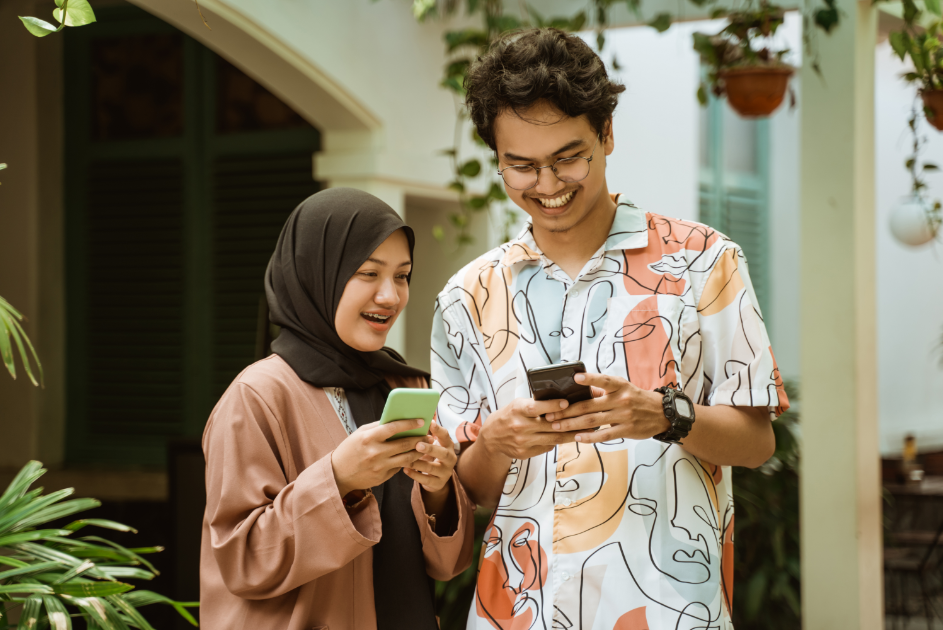A study found this flirting strategy to be the most effective, regardless of your looks or age
The ultimate pick-up line might be a one-liner.
Couple flirting.
In the 1988 Disney classic Who Framed Roger Rabbit? the titular character is in an unlikely relationship with his voluptuous wife, Jessica. Roger is a frantic, anxious rabbit with a penchant for mischief, while Jessica, a human, is a quintessential ’40s bombshell who stands about a foot and a half taller and isn’t “bad,” she's just “drawn that way.”
When private investigator Eddie Valiant asked Jessica what she sees in “that guy?” she replies, “He makes me laugh.” This type of couple may seem like something we only see in the movies, but don’t underestimate the power of humor when it comes to attractiveness. A 2022 study published in Evolutionary Psychology found that being humorous is the most effective way to flirt for both men and women.

“People think that humour, or being able to make another person laugh, is most effective for men who are looking for a long-term relationship. It’s least effective for women who are looking for a one-night stand. But laughing or giggling at the other person's jokes is an effective flirtation tactic for both sexes,” says Leif Edward Ottesen Kennair, a professor at the Norwegian University of Science and Technology's (NTNU) Department of Psychology.
“It is not only effective to be funny, but for women, it is very important that you show your potential partner that you think they are funny,” Rebecca Burch, a co-author from SUNY Oswego in New York, added.

For men, showing off their sense of humor was found to be the most effective way to flirt whether they were looking for a short-term or a long-term relationship. For women, being funny was the most effective tactic when looking for a long-term relationship. For people looking for a short-term fling, appearing available was the most effective tactic.
- YouTube youtu.be
According to the study, humor is effective regardless of one's attractiveness. “Individual differences in age, religiosity, extroversion, personal attractiveness and preferences for short-term sexual relationships had little or no effect on how effective respondents considered the various flirting tactics to be,” says study co-author Prof. Mons Bendixen.
If you see someone you like but don’t think you’re good-looking enough for them, give it a shot. You may still have a chance if you can make ’em laugh.
The most effective flirting tactics for those looking for a long-term relationship:
For women:
1. Makes him laugh
2. Shows interest in conversations
3. Spends time with him
4. Engages in deep conversations
5. Kisses on mouth

For men:
1. Makes her laugh
2. Spends time with her
3. Shows interest in conversations
4. Engages in deep conversations
5. Smiles
The study is proof that looks aren’t everything and having a good sense of humor isn’t just about making someone laugh. A great sense of humor is evidence that someone is intelligent, wise, perceptive, confident, can see things from new perspectives, and has good intuition. It also helps people quickly build bonds and share experiences, which is a great way to get close to someone in a fast and fun way.
So, why wouldn’t Jessica be with Roger? The guy is hilarious.
This story originally appeared three years ago. It has been updated.
